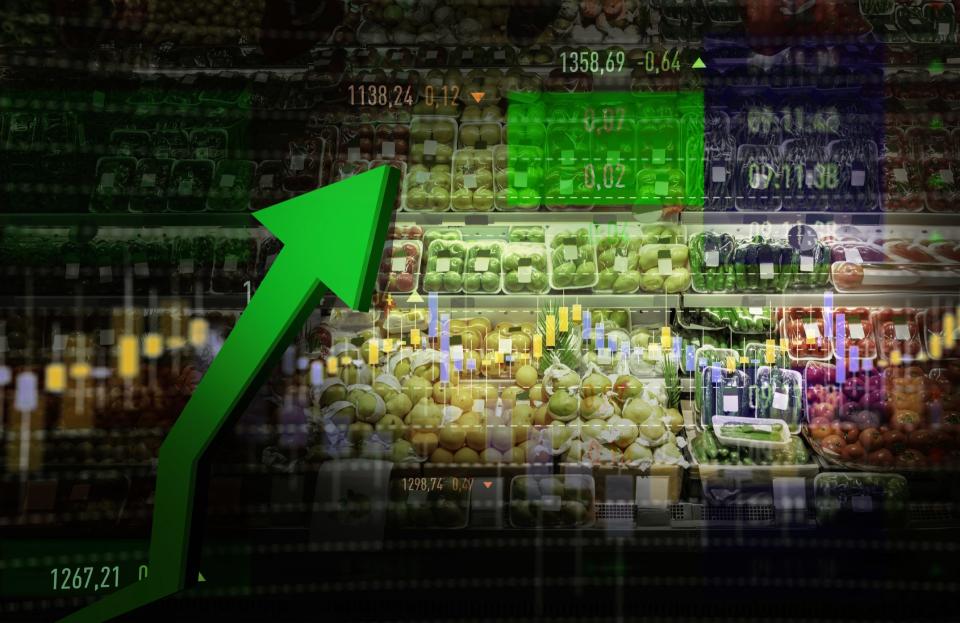Inflation Comes In Hot: Consumer Price Index Shows Food and Gas Prices Rose Again In July

The Bureau of Labor Statistics July Consumer Price Index report shows that prices increased .5% from June. This is after an overall increase of prices in June of .9%. These figures represent an overall increase of 5.4% in prices over the last 12 months before seasonal adjustments.
See: Despite Increasing Wages, Inflation Means the Average Worker Gets a 2% Pay Cut
Find: Understanding the Differences Between Inflation, Deflation & Stagflation
Wednesday’s report highlighted areas with the largest increase including shelter, energy and new vehicles. The food index increased as well by .7 errant in July as five of the major grocery store food group indexes increased, the BLS states. Gas prices also increased, rising 2.4%.
Food Items — Home and Away — Continue to See Increases
Grocery store runs have been getting more and more expensive, and July did not show any signs of it letting up. Although there was a slight dip in the food index numbers, prices remain elevated. After rising .8 % in June, the food index trended up .7% in July. Importantly, the index for food at home rose .7% as the index for meats, poultry, fish, and eggs continued to increase. These particular areas increased prices by 1.5% but represented a seven-month continuous increase in prices — one of which was a 2.5% increase in June alone.
Importantly, the food away from home index rose .8% in July — its largest monthly increase in 40 years.
Plummeting food production, supply and transit chain disruptions due to the coronavirus pandemic and increased demand have all contributed to unrelenting prices for food.
Energy Prices, Including Gas and Oil, Increase Again
Energy, another big-ticket item, increased yet again with the overall index adding a 1.6% increase on top of the 1.5% increase in June. Prices at the gas station climbed, 2.4% in July following a 2.5% increase in June.
Crude oil has had quite a year, as the combination of OPEC holding back supply to taper off pre-COVID surpluses and shut-down refineries having to deal with surging demand has sent the price of gas to levels not seen in years.
It has been widely reported that these prices expect to be maintained at least for the next couple of months while supply recalibrates to increasing global demand after the pandemic.
See: Why Are Grocery Prices Going Up in 2021?
Find: What You Need To Know About the Consumer Price Index
The Fed May Need to Respond to Inflation Sooner Than Later
While further increases in prices were expected for July, the ceaseless rise in everyday items like gas and food might force the Fed’s hand in tightening monetary policy before their target sometime in 2022. The central bank aims for a 2% average increase in inflation over time when considering their decisions, and although the CPI report is more timely, the metrics are still fed into the Fed’s data.
An important thing to note: outliers in the data, meaning the largest increases and the largest decreases, can be removed from the data in the Fed’s considerations for a “trimmed average.” After eliminating outliers, that gauge shows that inflation is still running at about 2%, the New York Times reports.
With some of these outliers being in such consumer-sensitive categories like gas and groceries, the Fed might have to respond sooner than it would like in order to cool consumer pressures.
More From GOBankingRates
Nominate Your Favorite Small Business To Be Featured on GOBankingRates
Monifi Review: Jumpstart Your Financial Progress With This Goal-Based Banking App’s $250 Bonus
This article originally appeared on GOBankingRates.com: Inflation Comes In Hot: Consumer Price Index Shows Food and Gas Prices Rose Again In July
